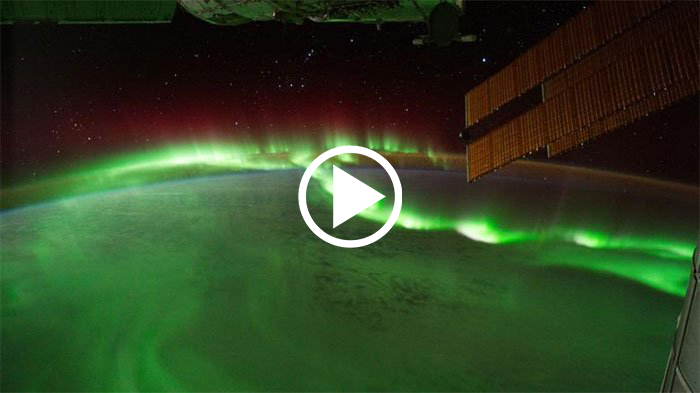Over the centuries, scientists have finally demonstrated the mechanism that produces the northern hemisphere’s auroras.
The aurora borealis, or aurora borealis, is a flow of colored light appearing in the northern hemisphere. Aurora is described as a wonderful light show on Earth. This is a phenomenon that only occurs at high latitudes, surprising scientists for centuries.
Speculations about the mysterious origin of the aurora have been around for a long time. But so far unsubstantiated inferences have been clearly proven.
The mystery has been revealed
According to a new study published in the journal Nature, a team of physicists from the University of Iowa has finally demonstrated that the Northern Lights “are produced by strong electromagnetic waves during geomagnetic storms”.

Research indicates that these phenomena are known as Alfven waves, which launch electrons back to Earth, causing the particles to produce a stream of light that scientists call the Northern Lights.
“The measurements reveal that the small number of electrons undergo ‘resonant acceleration’ by the electric field of the Alfven wave, similar to a surfer catching a wave and continuing to accelerate while riding the wave,” said the Assistant professor Greg Howes, of the Department of Physics and Astronomy at the University of Iowa is also a co-author of the study, said.
The idea that electrons “surf” on the electromagnetic field is a hypothesis first introduced in 1946 by the Russian physicist Lev Landau. The theory is named after the physicist who called it Landau damping. After more than 70 years, Landau’s damping theory has proven its worth.
Aurora recreation
After decades of research, scientists figured out how auroras are produced, but only now have they been able to simulate these colorful bands of light. For the first time, artificial auroras have been recreated in the lab using a large plasma physics device (LPD) at UCLA’s Basic Plasma Science Facility (BaPSF).
According to CNN, scientists used a 20-meter-long coin to reconstruct Earth’s magnetic field using powerful magnetic coils on UCLA’s LPD instrument. Inside the room, scientists have created a plasma environment similar to what exists in near-Earth space.
“Using a specially designed antenna, we project the Alfven waves along the machine, like when you quickly shake a garden hose up and down and watch the waves move along the side of the machine. pipe, ”Mr. Howes said.
When they began to see electrons “surfing” along the wave, they used other specialized instruments to assess how the electrons received energy from the wave.
“Although the experiment did not replicate the range of multicolored light in the sky, our laboratory measurements matched predictions from computer simulations and mathematical calculations, demonstrating that electrons riding Alfven waves can accelerate up to ‘at 72 million km / h and create auroras. “said Mr. Howes.
Study co-author Craig Kletzing added that these experiments allow them to make key measurements to prove the spatial and hypothetical measurements that actually explain how the aurora is produced.

Many space scientists are also excited about this news.
“I feel so excited! Very few laboratory experiments can prove hypotheses and models related to the space environment. Because space is so vast that it cannot be simulated in a lab, ”said Patrick Koehn, scientist in NASA’s Helicopter Physics Division.
Understanding the mechanism of acceleration of the electrons that produce the aurora, Koehn says, will be useful for many future studies.
Long road to go
Currently, the theory of the generation of the aurora has been proven, but there is still a long way to go to predict the strength of each coming storm.
“Predicting the strength of a particular geomagnetic storm, based on observations of the Sun and measurements made by spacecraft between the Earth and the Sun, is still a difficult problem to find,” Mr. Howes said.
Mr Howes said they had established the link of electrons surfing the Alfven waves about more than 16,000 km above the Earth’s surface. And now they must learn to predict the strength of these Alfven waves using spacecraft observatories.


